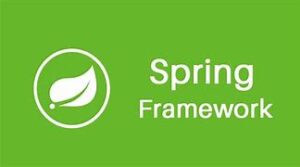- (+1866-648-7284 )
- hello@ohiocomputeracademy.com
Machine Learning with Python
Certification
Prerequiste
Course Overview
Python is ideal for machine learning and data analysis. You’ll start with the basics of Python programming and learn to use libraries like Pandas and NumPy for handling and manipulating data. You’ll also explore data visualization with matplotlib and apply statistical methods like hypothesis testing and ANOVA.
You’ll dive into machine learning concepts, including regression and logistic regression, and learn about time series, cluster analysis, and decision trees. These skills will help you build and use models to analyze data and make smart decisions.
Launch your career in Machine Learning by developing in-demand skills and become job-ready in 30 hours or less.
Highlights
Upgrade your career with top notch training
- Enhance Your Skills: Gain invaluable training that prepares you for success.
- Instructor-Led Training: Engage in interactive sessions that include hands-on exercises for practical experience.
- Flexible Online Format: Participate in the course from the comfort of your home or office.
- Accessible Learning Platform: Access course content on any device through our Learning Management System (LMS).
- Flexible Schedule: Enjoy a schedule that accommodates your personal and professional commitments.
- Job Assistance: Benefit from comprehensive support, including resume preparation and mock interviews to help you secure a position in the industry.
Key Learnings
- Learn how to use Python and libraries like Pandas and NumPy to work with data.
- Discover how to create charts and graphs to understand and present data better.
- Understand how to use statistics and tests to make sense of your data.
- Get familiar with machine learning techniques for making predictions and analyzing patterns.
- Learn to use methods like decision trees and random forests for more complex data analysis.
Pre-requisites
- Basic Python Programming Skills: Participants should have a fundamental understanding of Python programming. You can also take <Programming Essentials> using Python before enrolling into this course.
- Understanding of Basic Mathematics and Statistics: A basic understanding of mathematical concepts and Statistics will be helpful.
- Basic Knowledge of Data Visualization (optional):
- Familiarity with data visualization concepts and tools can enhance learning, although not strictly required.
Job roles and career paths
This training will equip you for the following job roles and career paths:
- Data Scientist
- Machine Learning Engineer
- Data Analyst
- Business Intelligence Analyst
- Data Engineer
Machine Learning with Python
The demand for machine learning with Python is very high and keeps growing. Many industries are using ML to improve their services and make better decisions based on data. Python is popular for this because it’s easy to use and has powerful libraries that help build ML models. As businesses generate more data and seek to use it smartly, they need experts who can apply ML techniques. This strong demand for ML skills with Python is expected to keep increasing as new technologies and applications continue to emerge.
Curriculum
- 15 Sections
- 251 Lessons
- 48 Hours
Expand all sectionsCollapse all sections
- Module 1. Introduction to Python Programming Language16
- 1.1Python—The Programming Language
- 1.2Installing Python
- 1.3Anaconda
- 1.4Spyder
- 1.5Jupyter notebook
- 1.6IDLE (Integrated Development Environment)
- 1.7Implement the Code Using an IDE
- 1.8Interact with Python
- 1.9Writing Python Code
- 1.10Make Calculations
- 1.11Import New Libraries and Functions
- 1.12Import additional libraries using pip install
- 1.13Import msgpack to satisfy basic requirement
- 1.14NumPy
- 1.15Pandas
- 1.16Matplotlib
- Module 2. The Pandas & NumPy Library44
- 2.1Pandas Data Structures
- 2.2Introduction
- 2.3Creating Your Own Data
- 2.4Types of Data
- 2.5The dtype Option
- 2.6The Series
- 2.7The list
- 2.8The tupple
- 2.9Difference between list & tupple
- 2.10The DataFrame
- 2.11Making Changes to Series and DataFrames
- 2.12Exporting and Importing Data
- 2.13CSV
- 2.14Excel
- 2.15Jason
- 2.16Aggregate Functions
- 2.17Indexing, Slicing, and Iterating
- 2.18Indexing
- 2.19Slicing
- 2.20Iterating an Array
- 2.21Conditions and Boolean Arrays
- 2.22Shape Manipulation
- 2.23The Index Objects
- 2.24Other Functionalities on Indexes
- 2.25Reindexing
- 2.26Dropping
- 2.27Arithmetic and Data Alignment
- 2.28between Data Structures
- 2.29Flexible Arithmetic Methods
- 2.30Operations between DataFrame and Series
- 2.31Function Application and Mapping
- 2.32Functions by Element
- 2.33Functions by Row or Column
- 2.34Statistics Functions
- 2.35Sorting and Ranking
- 2.36“Not a Number” Data
- 2.37Assigning a NaN Value
- 2.38Working With Missing Data
- 2.39Filtering Out NaN Values
- 2.40Filling in NaN Occurrences
- 2.41Hierarchical Indexing and Leveling
- 2.42Reordering and Sorting Levels
- 2.43Summary Statistic by Level
- 2.44AB Testing
- Module 3. Pandas in Depth: Data Manipulation26
- 3.1Data Preparation
- 3.2Merging
- 3.3Merging Multiple Data Sets
- 3.4Concatenating
- 3.5Combining
- 3.6Pivoting
- 3.7Removing
- 3.8Data Transformation
- 3.9Tidy Data
- 3.10Removing Duplicates
- 3.11Mapping
- 3.12Discretization and Binning
- 3.13Detecting and Filtering Outliers
- 3.14Permutation
- 3.15String Manipulation
- 3.16More String Methods
- 3.17Built-in Methods for Manipulation of Strings
- 3.18Regular Expressions
- 3.19Data Aggregation
- 3.20Group By
- 3.21A Practical Example
- 3.22Hierarchical Grouping
- 3.23Chain of Transformations
- 3.24Group Iteration
- 3.25Functions on Groups
- 3.26Advanced Data Aggregation
- Module 4. Data Visualization with matplotlib24
- 4.1The matplotlib Library
- 4.2Installation
- 4.3matplotlib Architecture
- 4.4Backend Layer
- 4.5Artist Layer
- 4.6Scripting Layer (pyplot)
- 4.7pyplot
- 4.8Line chart
- 4.9Scatter plot
- 4.10Annotations: Add Text
- 4.11Annotations: Properties
- 4.12A Simple Interactive Chart
- 4.13Set the Properties of the Plot
- 4.14Working with Multiple Figures and Axes
- 4.15Adding Further Elements to the Chart
- 4.16Adding Text
- 4.17Adding a Legend
- 4.18Legends: Properties
- 4.19Saving Your Charts
- 4.20Saving the Code
- 4.21Saving Your Chart Directly as an Image
- 4.22Line Chart
- 4.23Line Charts with pandas
- 4.24Histogram
- Module 5. Statistics and Averages13
- 5.1Means: The Lure of Averages
- 5.2The Average in Python: mean()
- 5.3Medians: Caught in the Middle
- 5.4The Median in Python: median()
- 5.5Statistics à la Mode
- 5.6The Mode in Python
- 5.7Deviating from the Average
- 5.8Measuring Variation
- 5.9Back to the Roots: Standard Deviation
- 5.10Standard Deviation in Python
- 5.11Conditions, Conditions, Conditions …
- 5.12Meeting Standards and Standings
- 5.13Catching Some Z’s
- Module 6. One-Sample Hypothesis Testing12
- 6.1Hypotheses, Tests, and Errors
- 6.2Hypothesis Tests and Sampling Distributions
- 6.3Z Testing in Python
- 6.4Catching Some Z’s Again
- 6.5Z Testing in Python
- 6.6t for One
- 6.7t Testing in Python
- 6.8Working with t-Distributions
- 6.9Visualizing t-Distributions
- 6.10Testing a Variance
- 6.11Working with Chi-Square Distributions
- 6.12Visualizing Chi-Square Distributions
- Module 7. Two-Sample Hypothesis Testing8
- Module 8. Testing More than Two Samples5
- Module 9. More Complicated Testing3
- Module 10. Introducing Machine Learning5
- Module 11. Forecasting Numeric Data – Regression Methods24
- 11.1Understanding regression
- 11.2Simple linear regression
- 11.3Ordinary least squares estimation
- 11.4Multiple Linear Regression
- 11.5Regression: What a Line!
- 11.6Linear Regression in Python
- 11.7Juggling Many Relationships at Once: Multiple Regression
- 11.8Exploring and preparing the data
- 11.9ANOVA: Another Look
- 11.10Formulae and Linear Models
- 11.11Model Building
- 11.12training a model on the data
- 11.13Evaluating model performance
- 11.14improving model performance
- 11.15Goodness of Fit with Data—The Perils of Overfitting
- 11.16Root-Mean-Square Error
- 11.17Model Simplicity and Goodness of Fit
- 11.18Assumption checking
- 11.19Assumption checking using packages
- 11.20Case studies of Linear Regression
- 11.21Estimation the quality of wines
- 11.22Price prediction of real estate
- 11.23Movie popularity prediction
- 11.24Retail sales prediction
- Module 12. When the Response Falls into Two Categories – Logistic Regression23
- 12.1Understanding logistic regression
- 12.2The logit model
- 12.3Generalized Linear Model
- 12.4Simple logistic regression
- 12.5Multiple logistic regression
- 12.6Customer satisfaction analysis with the multiple logistic regression
- 12.7Multiple logistic regression with categorical data
- 12.8The Dataset and the Data Dictionary
- 12.9Data Import in Python
- 12.10EDD in Python
- 12.11Outlier Treatment in Python
- 12.12Missing Value treatment in Python
- 12.13Variable transformation and Deletion in Python
- 12.14Dummy variable creation in Python
- 12.15Automatic dummy variable creation
- 12.16Formulae and Logistic Models
- 12.17Model Building
- 12.18training a model on the data
- 12.19Evaluating model performance
- 12.20improving model performance
- 12.21Goodness of Fit with Data—The Perils of Overfitting
- 12.22Confusion Matrix
- 12.23Creating Confusion Matrix in Python
- Module 13. Time series models with Python16
- 13.1Introduction to Time Series Data
- 13.2Notation for Time Series Data
- 13.3Peculiarities of Time Series Data
- 13.4Setting the Frequency
- 13.5Treatment of missing values
- 13.6White Noise
- 13.7Stationarity
- 13.8Seasonality
- 13.9Correlation Between Past and Present Values
- 13.10The Autocorrelation Function (ACF)
- 13.11The Partial Autocorrelation Function (PACF)
- 13.12Picking the Correct Model
- 13.13The Autoregressive (AR) Model
- 13.14ARMA
- 13.15ARIMA
- 13.16Automatic ARIMA
- Module 14. Cluster Analysis9
- 14.1Unsupervised Learning & Clustering: theory
- 14.2K-Means Clustering: Theory
- 14.3Example K-Means Clustering in Python
- 14.4Visualize K-Means Results in Python
- 14.5Model-based Unsupervised Clustering in Python
- 14.6How to assess a Clustering Tendency of the dataset
- 14.7Selecting the number of clusters for unsupervised Clustering methods (K-Means)
- 14.8Assessing the performance of unsupervised learning (clustering) algorithms
- 14.9How to compare the performance of different unsupervised clustering algorithms?
- Module 15. Decision Tree & Random Forest23
- 15.1A Simple Tree Model
- 15.2Deciding How to Split Trees
- 15.3The stopping criteria for controlling tree growth
- 15.4Tree Entropy and Information Gain
- 15.5Pros and Cons of Decision Trees
- 15.6Tree Overfitting
- 15.7Pruning Trees
- 15.8Decision Trees for Classification
- 15.9Conditional Inference Trees
- 15.10Conditional Inference Trees
- 15.11Building a decision tree in Python
- 15.12Model Validation
- 15.13Model Improvement
- 15.14Model Interpretation
- 15.15Ensemble technique
- 15.16Random Forest Classification
- 15.17Splitting Data into Test and Train Set in Python
- 15.18Choose the number of trees
- 15.19Model Validation
- 15.20Model Improvement
- 15.21Model Interpretation
- 15.22Accuracy of the model
- 15.23Decision Vs Random Forest
$1,399
Course Summary
Duration: 48 hours
Level: Expert
Training Mode: Live Online | Instructor-Led | Hands-On
Share This Course
Highlights
- Instructor-led training
- One-on-One
- Free access to future sessions (subject to schedule & availability)
- Job Assistance
- Interview preparation
- Online access provided through the LMS
Pricing
$1,399
Group Training (minimum 5 candidates):
$839
Individual Coaching:
$1,399
Corporate Training
- Customized Learning
- Enterprise Grade Reporting
- 24x7 Support
- Workscale Upskilling






